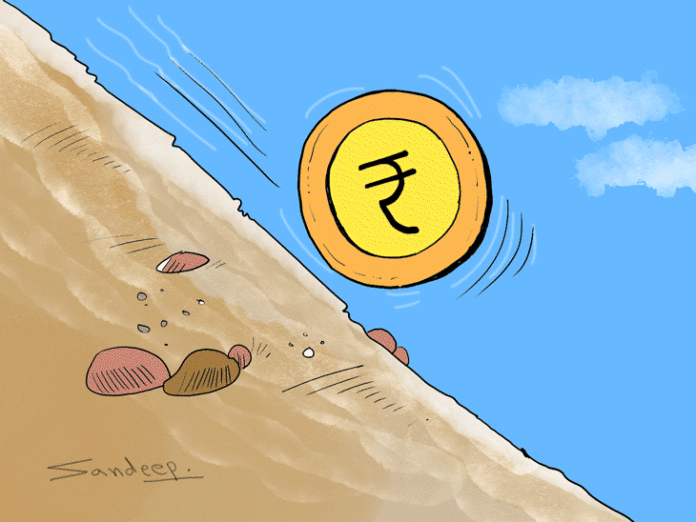- Hindi News
- Business
- Indian Rupees At All Time Low Against Dollar | Outflow And Market Crash And Other Details
New Delhi18 minutes ago
- copy link
The Indian rupee has reached its lowest level. On Monday (November 4), it fell by 2 paise against the US dollar and closed at Rs 84.1055 per dollar. Earlier on October 31, the rupee had closed at its lowest level of 84.0886 per dollar.
The reason for this fall in rupee was continuous outflow from local stocks. Due to which the influence of the dollar became stronger. According to news agency Reuters, this also helped in raising the local peers (other currencies) of the dollar before the presidential elections in America.
There was a decline of 941 points in the stock market
Sensex witnessed a decline of 941 points (1.18%) today. It closed at the level of 78,782. At the same time, Nifty also declined by 309 points (1.27%), it closed at the level of 23,995.

Rupee reaches lowest level even in intraday
The rupee touched an intra-day low of 84.1225 against the dollar. According to the report, on Monday the rupee opened at 84.1125 against the dollar and at one time during trading it reached a low of 84.1225. Market experts believe that the rupee may reach its lowest level of 84.25 in the coming days.
Importing will be expensive
Fall in rupee means that import of goods is going to become expensive for India. Apart from this, traveling and studying abroad has also become expensive. Suppose, when the value of rupee was 50 against the dollar, Indian students in America could get 1 dollar for 50 rupees. Now for 1 dollar students will have to spend Rs 83.40. Due to this, everything from fees to accommodation, food and other things will become expensive.

How is the value of currency determined?
If the value of any other currency decreases in comparison to the dollar, it is called falling, breaking, weakening of the currency. Currency Depreciation in English. Every country has foreign currency reserves with which it conducts international transactions. The effect of increase and decrease in foreign reserves is visible on the price of currency.
If the dollars in India's foreign reserves are equal to the US rupee reserves, then the value of the rupee will remain stable. If our dollar decreases, the rupee will weaken; if it increases, the rupee will strengthen. This is called floating rate system.



